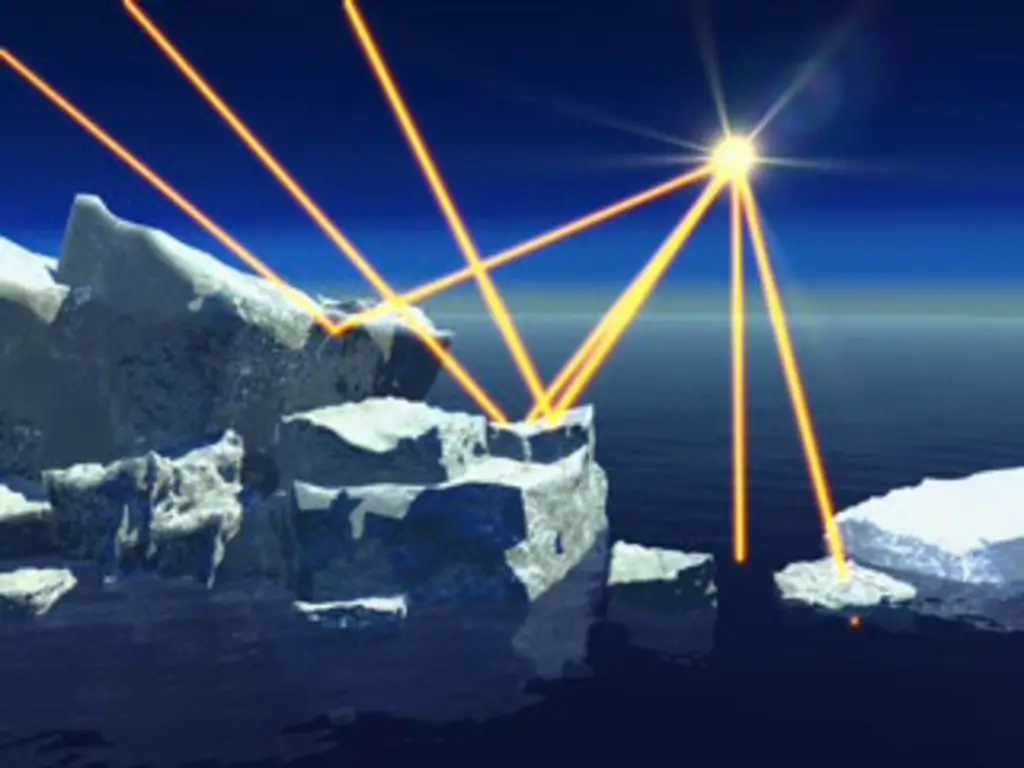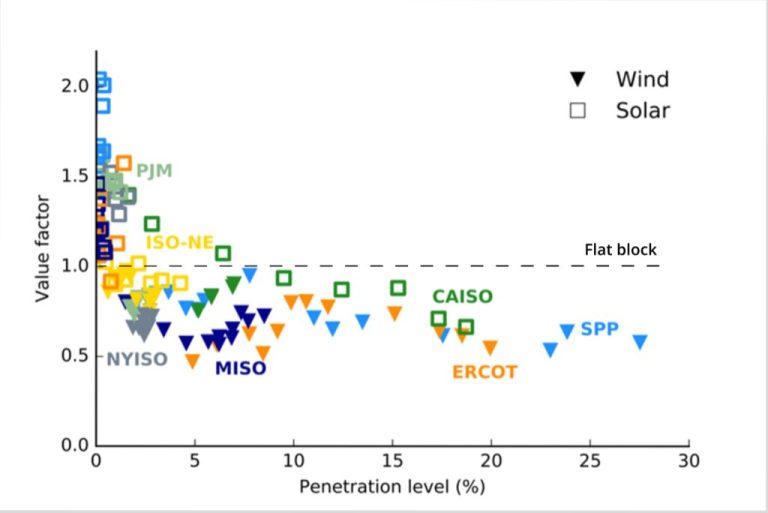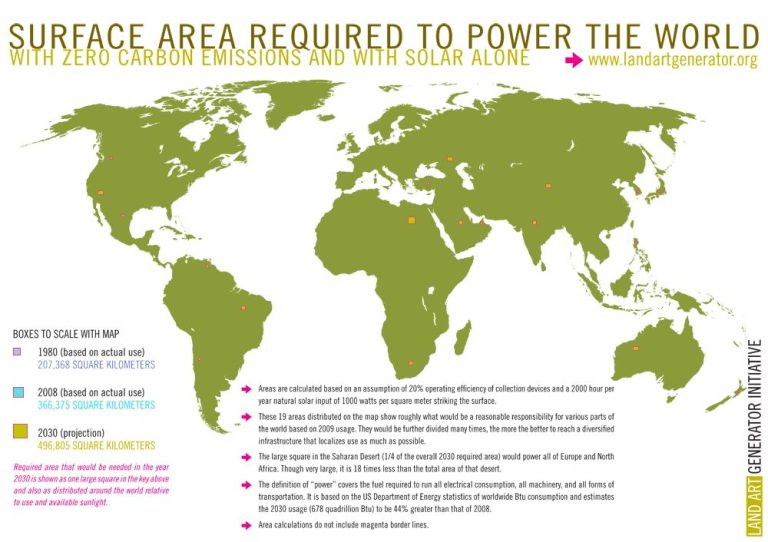Why Does Only 47 Of The Sun’S Energy Reach Earth’S Surface?
The sun produces an enormous amount of energy, but only a fraction of that energy actually reaches the Earth’s surface. There are several reasons why the Earth receives only about 47% of the sun’s energy. This article will examine the main causes of energy loss as sunlight travels through space to Earth’s atmosphere and surface.
The three primary reasons that sunlight is reduced before reaching Earth are: the great distance it travels, absorption by the atmosphere, and reflection by air molecules, clouds, snow, ice, and the surface itself. We will explore each of these factors in detail to understand why only 47% of the sun’s energy penetrate to ground level.
The Sun’s Energy Output
The total energy output from the Sun is enormous. The Sun produces 3.8 x 10^26 watts of power through nuclear fusion reactions in its core. To put that in perspective, that is the equivalent of nearly 10 billion trillion lightbulbs. This energy radiates outward from the Sun’s surface and travels the 150 million kilometers to Earth in about 8 minutes in the form of electromagnetic radiation across the full spectrum – ultraviolet light, visible light, and infrared.
Of the total solar energy output from the Sun, approximately 1.7 x 10^17 watts reaches the top of Earth’s atmosphere spread out over the entire half of the planet facing the Sun. This is a miniscule amount compared to the total solar output, only about 0.000000045%. The reason such a small fraction reaches Earth is because of the enormous distance between the Sun and Earth. The intensity of radiation decreases with the square of distance, so over 150 million kilometers, the intensity decreases dramatically.
Distance from the Sun
The distance between the Sun and Earth plays a significant role in how much solar energy reaches Earth’s surface. The Sun’s energy output per square meter decreases proportionally to the square of the distance from its surface, as described by the inverse square law. This means if the distance doubles, the intensity decreases to 1/4 of its original value. Earth’s average distance from the Sun is about 93 million miles (150 million km). At this distance, Earth receives an average of 1,366 watts per square meter of solar energy at the very top of the atmosphere when the Sun is directly overhead. This is known as the solar constant. If Earth were half as far from the Sun, at around 47 million miles (75 million km), it would receive four times as much energy, about 5,464 watts per meter squared. However, if Earth were twice as far away at 186 million miles (300 million km), the solar intensity would drop to only 342 watts per meter squared. Therefore, Earth’s distance from the Sun causes a significant reduction in the maximum potential solar energy our planet can receive.
Atmospheric Absorption
A significant amount of the Sun’s energy is absorbed by gases in Earth’s atmosphere before reaching the surface. The ozone layer absorbs almost all of the Sun’s high frequency ultraviolet radiation. Oxygen and nitrogen molecules absorb specific infrared wavelengths of sunlight. Water vapor is an excellent absorber of infrared energy, capturing about 70% of the infrared energy that comes into the atmosphere. Even air molecules absorb energy as direct sunlight passes through the atmosphere. The lower the frequency of the radiation, the more transparent the atmosphere is to allowing it through. Higher frequency ultraviolet rays are almost completely absorbed, while most visible light and some infrared make it to the surface. Overall, atmospheric absorption accounts for about 19% energy loss from the original solar radiation.
Reflection from Clouds
Clouds play a major role in reflecting sunlight back into space before it can reach Earth’s surface. This is because clouds are very reflective, with up to 90% of visible light reflected by the densest clouds. As sunlight encounters the water droplets and ice crystals that make up clouds, it bounces off in multiple directions. This diffuse reflection sends much of the sunlight back to outer space. The more cloud cover and the denser the cloud layer, the more reflection occurs. Low-level stratiform clouds tend to reflect the most sunlight, as they cover large portions of the sky. High-altitude cirrus clouds reflect less, but still redirect a portion of incoming rays. Overall, global cloud cover reflects about 20% of incoming solar radiation. Without this reflection, significantly more solar energy would reach Earth’s surface and oceans. Clouds act like a giant mirror in the sky, helping counteract greenhouse warming to some degree. However, the extent of this cooling effect depends on the type and distribution of clouds. Increased cloudiness could enhance the reflection, while decreased cloud cover would allow more sunlight through. The complex interactions between clouds, atmosphere and climate mean small changes can have significant impacts on Earth’s energy budget.
Reflection from Ice and Snow
A significant amount of the Sun’s energy is reflected by ice and snow, especially in the polar regions. This is due to the highly reflective nature of ice and snow.
Snow and ice have high albedo, meaning they are very effective at reflecting sunlight. Fresh snow has an albedo of about 0.9, meaning 90% of sunlight is reflected. Older snow still has an albedo around 0.7. In comparison, soil and water have much lower albedos of 0.1-0.3. Ice also has a very high albedo, typically 0.5-0.7.
With large polar ice sheets and seasonal snow cover, a substantial portion of incoming solar radiation gets reflected back to space. This is estimated to reflect around 3-5% of the total solar energy Earth receives. More energy reflection occurs during winter and in years with greater snow and ice extent.

The high reflectivity of ice and snow is why they appear white. The more light that gets reflected, the less is absorbed, which allows ice and snow to maintain their freezing temperatures despite constant solar radiation. This high albedo reflectivity is a key reason why the polar regions remain much cooler than equatorial areas on Earth.
Absorption by Land and Water
A significant portion of the Sun’s energy is absorbed by land and water across the Earth’s surface. As sunlight reaches the ground, land areas like forests, deserts, and cities will absorb some of the incoming radiation and convert it into heat energy. This absorption accounts for around 6% of the Sun’s energy. Similarly, oceans, lakes, and other bodies of water will absorb solar radiation and heat up. Water absorbs solar energy and stores it more efficiently than land due to its higher heat capacity. Absorption by water bodies accounts for around 23% of the total solar energy received. The exact amount of absorption depends on factors like cloud cover, surface color, and moisture content. Darker surfaces like forests and open water will absorb more radiation than lighter surfaces like desert sand or ice. Drier areas absorb less energy than wet surfaces. Overall, the absorbance of solar energy by Earth’s land and water is a key reason that only 47% of the Sun’s radiation reaches the planet’s surface.
Reflection from Land and Water
A significant amount of the sun’s energy is reflected by the Earth’s land and water surfaces before it can be absorbed. On average, about 10% of incoming solar radiation is immediately reflected back into space by land and water. This occurs because land and water are not perfectly black, but have some level of albedo or reflectivity.
For example, snow and ice have a very high albedo, reflecting 80-90% of sunlight. Even soil and rocks reflect up to 25% of sunlight depending on their color and moisture content. Water reflects about 6% of sunlight on average, but this can vary from 2-90% depending on the angle of the sun and viewing angle.
The combined reflectivity of various land and water surfaces causes a substantial portion of incoming solar energy to be reflected away before it can be used to heat the planet. This reflection limits the total amount of energy that is absorbed and contributes to the reduction from the approximately 1,360 watts per square meter at the top of the atmosphere to about 1,000 watts per square meter at Earth’s surface.
Scattering of Sunlight
Sunlight has to travel through the atmosphere to reach Earth’s surface. As light passes through the atmosphere, it interacts with gas molecules, water droplets, dust, and other particles. These interactions cause the sunlight to be scattered – meaning the photons that make up sunlight are deflected in different directions. Shorter wavelengths of light, like blue and violet light, are more easily scattered than longer wavelengths.
This scattering effect is called Rayleigh scattering, named after the British physicist Lord Rayleigh who first described it. Due to Rayleigh scattering, sunlight takes on a blue hue as it passes through the atmosphere. Without this atmospheric scattering effect, the sky would appear black even during daytime. The more particles in the atmosphere, the more scattered light there is. This is why skies often appear hazy or milky white when very polluted or dusty.
Rayleigh scattering is strongest when light encounters particles smaller than its wavelength. The shorter blue and violet wavelengths are scattered most, giving the sky its blue appearance. Longer wavelengths like red and orange are scattered least, enabling us to see the warm hues of the Sun at sunset and sunrise when its light passes through more atmosphere near the horizon. Scattering affects the amount and direction of sunlight that reaches Earth’s surface.
Conclusion
The vast majority of the sun’s energy is lost before it can reach Earth’s surface. Only about 47% of the radiation emitted by the sun penetrates Earth’s atmosphere and reaches the ground. There are several key reasons for this energy loss:
– Distance from the sun – The further a planet is from the sun, the more diluted the solar radiation becomes. By the time the rays reach Earth, they have significantly weakened.
– Absorption by the atmosphere – Gases in Earth’s atmosphere, especially ozone and water vapor, absorb a portion of the incoming sunlight. This prevents those rays from making it to the surface.
– Reflection by clouds – Clouds are very effective at reflecting sunlight back into space, blocking the rays from reaching the ground.
– Reflection by ice and snow – Large icy surfaces like glaciers and snowfields reflect up to 80% of sunlight, also preventing absorption at Earth’s surface.
– Reflection from land and water – Water reflects about 6% of incoming sunlight, while land reflects 4-25%. This further reduces what remains.
By the time solar radiation works its way through Earth’s atmosphere and is reflected by various surfaces, only about 47% remains to be absorbed at the ground. This explains why the amount of the sun’s energy reaching Earth is significantly less than what is initially emitted.






